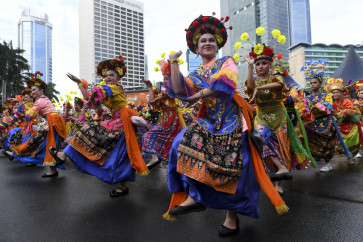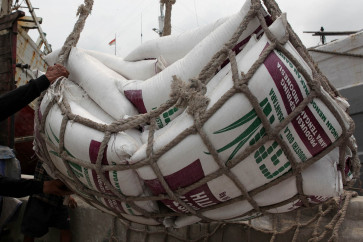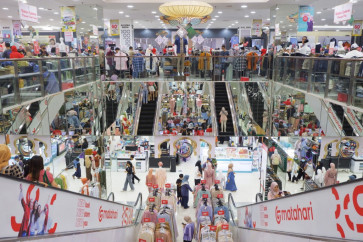Popular Reads
Top Results
Can't find what you're looking for?
View all search resultsPopular Reads
Top Results
Can't find what you're looking for?
View all search resultsKeep sporting investment on-shore
Indonesia’s Bakrie Group recently completed the buyout of Australia A-League club, the Brisbane Roar
Change text size
Gift Premium Articles
to Anyone
I
ndonesia’s Bakrie Group recently completed the buyout of Australia A-League club, the Brisbane Roar. Despite being the champions of the Australian soccer competition, the Roar had come under the league management for seven months, until the Bakrie Group took up a 70 percent stake in the club last October. The final 30 percent was snapped up on Monday.
Corporate affairs director of Football Federation Australia (FFA), Kyle Patterson, praised the move of the group, which is owned by the family of Golkar Party chairman Aburizal Bakrie, saying there is massive potential for football in Australia, but it will not be realized without any capital.
Sure in a country like Australia, where attending a sporting event is practically a rite of cultural passage, there is obviously massive investment potential.
But the market is already saturated with Australian rules football (AFL) and both rugby union and league, which take the lion’s share of the supporters and the athletes (and hence the money) in the Australian commercial team-sports market.
In a press statement on the potential the group saw in investing in the Roar, Aga Bakrie said “Our aim is to develop the Roar into Australia’s biggest club and carry that success across Asia.”
Being a smart businessman, Bakrie has obviously made a wise and presumably informed investment decision. But the question remains, why Australia?
Yes, there is the potential to make a profit, but Indonesia is not necessarily any different. Why should an Indonesian company invest in an Australian club to grow the world’s most beloved sport throughout Asia, when there is arguably more potential on home soil?
With a population of over 240 million people, 28 million of which are classified as “fan potential”,
according to a research conducted by Italian giant Inter Milan, there is clearly huge potential for Indonesia to be the role model for running a prosperous and successful league in Asia.
The Indonesian market is not already saturated with the team-sport phenomenon, where people don’t just support a club, but live the highs and lows with the club as if they are physically contributing to its process.
When people in Indonesia talk about the local football clubs, they don’t identify with them or refer to them using “we”, as if it is intrinsically a part of them.
So how can this be changed?
Well for starters the Indonesian Soccer Association (PSSI) and the Indonesian Soccer Rescuing Committee (KPSI) need to sort out their differences. But let’s talk about situations that are within the control of prospective parties such as the Bakrie Group.
With partnerships with big European clubs being forged left, right and center, and expert after expert coming out and saying that football in Indonesia can be a success and here’s how to do it, why would the people with the money to make this happen head off-shore?
They have the potential to do to Asian football what Kerry Packer did to cricket — make it bigger and better than one could have ever thought possible.
Indonesian kids grow up watching football on TV, but it needs to be Indonesian football.
They need to have local idols so that their dreams to grow up and be a famous football player are big, but not too big. This way they can be realistic and achievable.
This is not to say that one day these kids won’t be able to play in the Premier League or the La Liga or the Serie A, but they have to start somewhere. Unfortunately, just kicking a ball around on the back blocks whilst the governing bodies are always at odds with each other isn’t somewhere.
Investments have already started flowing in the form of international football academies in Indonesia, which is a good start.
Next, we need elite youth teams, elite reserves competitions and a national competition that everyone cares about, so much so that it is the key headline on both the news and sports sections of the papers.
This requires infrastructure, media rights, sponsorship deals, but in a country with an economy of US$1.03 trillion, it can be done.
Yes, Indonesia is a large country with a large population, 13 percent of which live below the international poverty line. But sports can do so much for a country. It can bring people who otherwise see differently together.
It allows for the natural human expression of competitiveness and aggression. It allows one to raise their country’s flag peacefully in another. Particularly in a developing country, it can contribute significantly to a growing economy.
Australia knows sports and they know the business of sports, possibly better than anyone. And although parts of the industry may appear to be “struggling”, everything’s relative.
After all, if fellow A-League club Melbourne Victory managed to entice international superstar Harry Kewell back home from the riches of the English Premier League, I think Brisbane would have managed to solve their financial issues locally as well.
So, by all means, take a leaf out of the Australian sporting Bible. But be proud of the potential Indonesia exudes on so many levels, and keep sporting investments on-shore.
The writer is a master of business and master of journalism student at Monash University.










